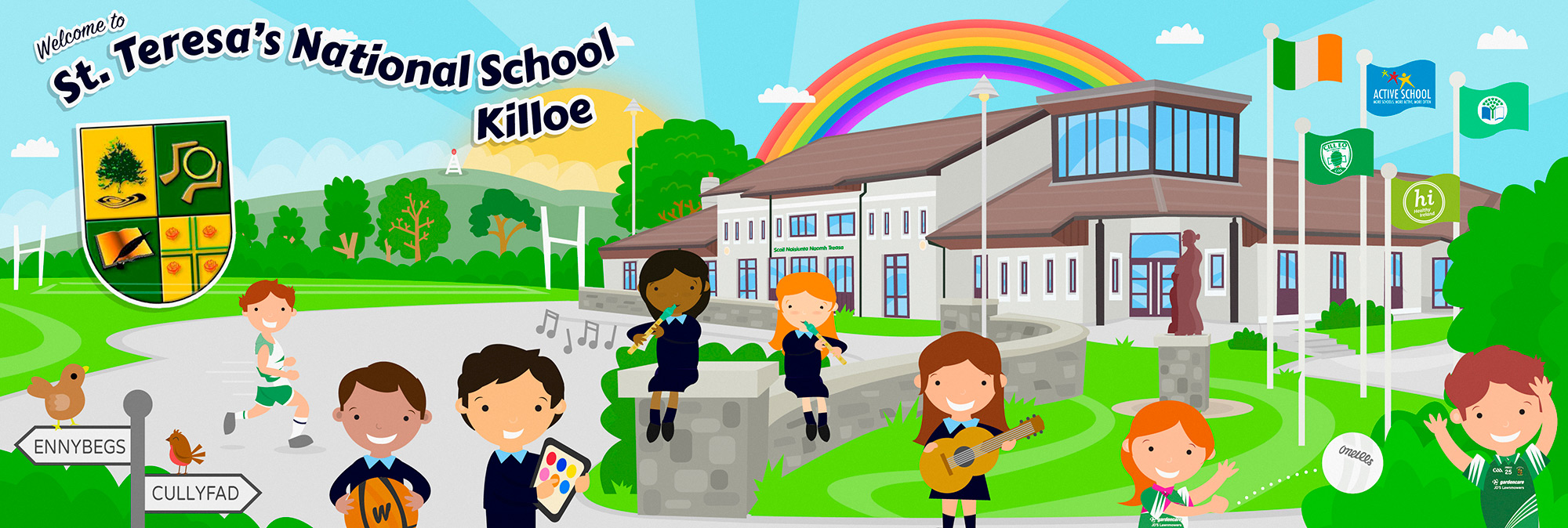Green Schools
The school is working on the fifth theme of Biodiversity as well as maintaining the previous themes. We at Saint Teresa's are very conscious of that our children to learn about and understand about native tress and species. Each class is given a different native tree to study, along with being taught about native and invasive species. Our bug hotel is happily housing lots of mini beasts and we look forward to growing our own vegetables in the Spring.
What is Biodiversity?
The meaning of ‘Biodiversity’ is easy to understand when we break the word down; “bio” refers to life and ‘living things’ and “Diversity” means just that; range or variety. The word refers to the huge variety and variation of life that surrounds us on planet earth. Maintaining a high level of diversity among plants, animals and all living things all around us is essential in keeping the environment healthy and fit for human life. This includes diversity within species, between species and diversity of ecosystems.
Some Important Biodiversity Terms that your child will be using.
- Species: A species is a group of organisms capable of interbreeding and producing fertile offspring. For example, the Mountain Ash is a species of tree, and the Red Squirrel is a species of mammal, the Chaffinch is a species of bird.
- Native Species: Our native species are the species of plants and animals that reached Ireland naturally; mostly since the last ice-age before Ireland was separated from the rest of Europe by the rising sea. As an example, the most common native trees in Ireland include oak, ash, hazel, birch, Scots pine, rowan and willow. Eventually, people brought other plants on their travels many years later. Native plant species are the preferred species for planting in school and home gardens.
- Non-Native, ‘Alien’ & Invasive Species: Alien species are also known as ‘non-native’ species. Trees are plants and animals that would not be found in Ireland without human involvement. Not all alien species in Ireland are able to survive and establish in the wild. Of those that do establish some can impact on our biodiversity and become invasive. The ability of a species to become invasive depends on a number of factors. These can include biological traits such as fast growth and reproduction. Invasive species often spread quickly or can move easily from place to place.
- Habitat: A habitat is the natural environment in which an organism lives, or the physical environment that surrounds, influences and is utilised by a species population. For example, a Red Squirrel lives in a Woodland habitat, and a Humpback Whale lives in a Marine habitat.
- Ecosystem: An Ecosystem is a community of plants, animals, fungi and micro-organisms that live, feed, reproduce and interact together in the same area or environment. Irish examples include a Bog, Woodland, a Marsh, a Hedge, a Lake, an Ocean or even a Rock Pool. You may also hear about Ecosystem Services. These are the benefits that ecosystems can provide to us, e.g. woodlands provide protection from flooding; forests can regulate climate change; reed-beds can break down wastes and recycle nutrients and can filter and purify water; animals and microbes working in soil maintain and increase soil fertility; plants purify the air; some animals and plants control pests and diseases and provide goods such as woods, textiles and food.
St Teresa's National School, Killoe, Co. Longford
Phone: 043 332 3352 | Email: office@killoens.ie
